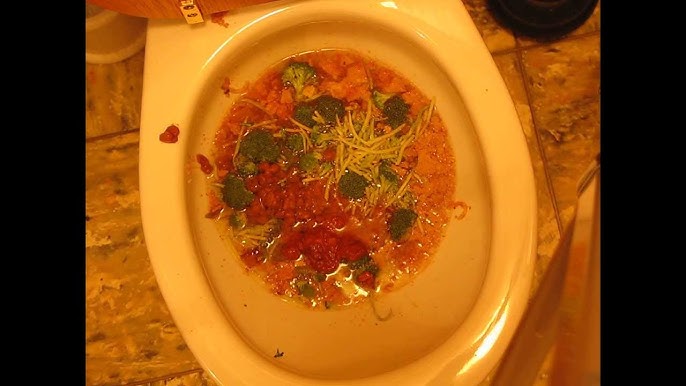Is it Suitable to Dispose of Food Waste in the Toilet?
Is it Suitable to Dispose of Food Waste in the Toilet?
Blog Article
Here underneath you can get some excellent expertise about Think Twice Before Flushing Food Down Your Toilet.

Intro
Lots of people are often confronted with the predicament of what to do with food waste, specifically when it pertains to leftovers or scraps. One common inquiry that develops is whether it's alright to purge food down the commode. In this write-up, we'll look into the reasons why people may take into consideration purging food, the consequences of doing so, and alternative methods for correct disposal.
Reasons individuals may consider purging food
Absence of awareness
Some people might not understand the possible damage brought on by purging food down the toilet. They might wrongly think that it's a harmless method.
Benefit
Purging food down the commode might look like a quick and easy service to getting rid of unwanted scraps, specifically when there's no close-by trash can available.
Laziness
In some cases, people may simply choose to flush food out of sheer negligence, without thinking about the effects of their actions.
Effects of flushing food down the commode
Environmental effect
Food waste that ends up in rivers can contribute to pollution and injury water ecological communities. Additionally, the water made use of to flush food can strain water sources.
Plumbing problems
Purging food can lead to clogged up pipes and drains pipes, triggering pricey pipes repairs and hassles.
Sorts of food that ought to not be purged
Coarse foods
Foods with coarse structures such as celery or corn husks can obtain tangled in pipelines and cause obstructions.
Starchy foods
Starchy foods like pasta and rice can absorb water and swell, causing obstructions in pipelines.
Oils and fats
Greasy foods like bacon or cooking oils need to never ever be flushed down the commode as they can solidify and create obstructions.
Appropriate disposal approaches for food waste
Making use of a garbage disposal
For homes furnished with garbage disposals, food scraps can be ground up and purged with the plumbing system. Nonetheless, not all foods are suitable for disposal in this fashion.
Recycling
Specific food packaging products can be recycled, reducing waste and decreasing environmental impact.
Composting
Composting is an environment-friendly method to deal with food waste. Organic materials can be composted and utilized to enhance soil for horticulture.
The significance of appropriate waste administration
Minimizing ecological harm
Correct waste management techniques, such as composting and recycling, help decrease contamination and preserve natural resources for future generations.
Safeguarding plumbing systems
By staying clear of the practice of flushing food down the bathroom, home owners can avoid pricey plumbing repairs and keep the integrity of their plumbing systems.
Verdict
To conclude, while it might be tempting to flush food down the toilet for benefit, it is essential to understand the potential consequences of this action. By taking on appropriate waste monitoring techniques and getting rid of food waste responsibly, people can add to healthier pipes systems and a cleaner environment for all.
FLUSH FOOD DOWN THE TOILET?
FLUSHING FOOD CAN CAUSE BLOCKED DRAINS IN YOUR HOME
All of the plumbing fixtures in your home are connected to the same sewer pipe outside of your home. This outdoor sewer pipe is responsible for transporting all the wastewater from your home to the Council sewer mains. Even small pieces of food that go down the kitchen sink can cause problems for your sewer. It should therefore be obvious that flushing larger bits of food, such as meat, risks a clog in either the toilet itself or the sewer pipes. Flushing greasy food is even more problematic because oil coagulates when it cools, coating the interior lining of your pipes.
THE TOILET IS NOT A BIN
Food isn’t the only thing that people shouldn’t be flushing down the toilet. People use the toilet to dispose of all kinds of things such as tampons, makeup wipes, dental floss, kitty litter and even underwear. Water goes to great lengths to educate residents about the high costs and stress placed on wastewater treatment systems simply from people flushing the wrong stuff down the toilet. It costs taxpayers millions of dollars each year, and homeowners thousands in blocked drain repairs.
FLUSHING FOOD IS A WASTE OF WATER
Flushing food is a waste of our most precious resource - water. In June this year Level 1 water restrictions were introduced to protect water supply from drought conditions. Much of New South Wales continues to be affected by prolonged drought with recent figures revealing up to 97 per cent of the state remains in drought. Depending on whether you have a single or dual flush toilet, every single flush uses between five and 11 litres of water. In the current climate this is a huge amount of water to be wasting on flushing food that should be placed in the bin (or better yet, the compost).
https://www.jabplumbingsolutions.com.au/blog/can-you-flush-food-down-the-toilet

As an avid reader on Flushing Food Down the Toilet?, I thought sharing that portion was a smart idea. If you please set aside a second to distribute this blog post if you enjoyed reading it. I enjoy your readership.
Visit My Site Report this page